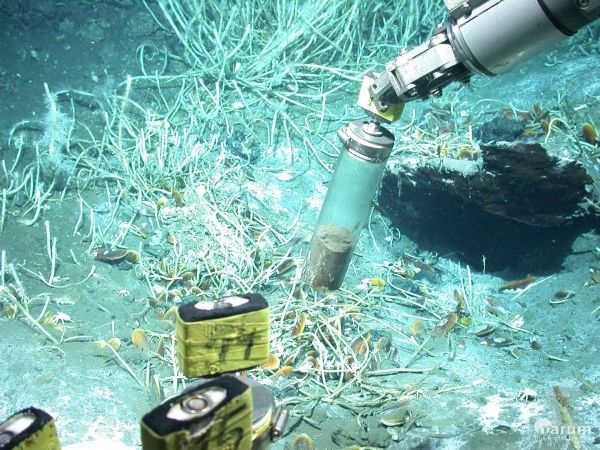Crude oil and gas naturally escape from the seabed in many places known as "seeps." There, these hydrocarbons move up from source rocks through fractures and sediments towards the surface, where they leak out of the ground and sustain a diversity of densely populated habitats in the dark ocean. A large part of the hydrocarbons, primarily alkanes, is already degraded before it reaches the sediment surface. Even deep down in the sediment, where no oxygen exists, it provides an important energy source for subsurface microorganisms, amongst them some of the so-called archaea.
These archaea were good for many surprises in recent years. Now a study led by scientists from the Max Planck Institute for Marine Microbiology in Bremen, Germany, and the MARUM, Centre for Marine Environmental Sciences, provides environmental information, genomes and first images of a microbe that has the potential to transform long-chain hydrocarbons to methane. Their results are published in the journal mBio.
Splitting oil into methane and carbon dioxide
This microbe, an archaeon named Methanoliparia, transforms the hydrocarbons by a process called alkane disproportionation: It splits the oil into methane (CH4) and carbon dioxide (CO2). Previously, this transformation was thought to require a complex partnership between two kinds of organisms, archaea and bacteria. Here the team from Max Planck Institute for Marine Microbiology and MARUM presents evidence for a different solution. "This is the first time we get to see a microbe that has the potential to degrade oil to methane all by itself," first-author Rafael Laso-Pérez explains.
Read more at Max Planck Institute for Marine Microbiology
Image: The submersible vehicle MARUM-QUEST samples for sediment at oil seeps in the Gulf of Mexico. (© MARUM – Centre for Marine Environmental Sciences)


